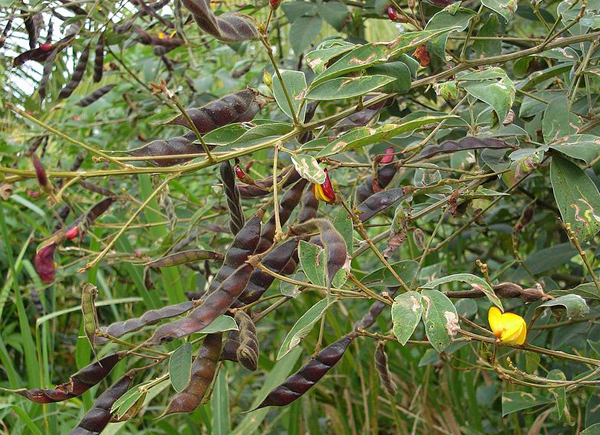
Today’s blog post is reposted from Tropical Permaculture, an excellent site that I’ve been using lately. Sites like Tropical Permaculture and Eco Oasis that have specialized, expert level advice are invaluable. In a few hours of research you can glean important ideas that others learned over many years and use them to greatly improve your project.
“There is no such thing as a botanical definition for permaculture plants. I’m not sure it’s an official term at all. When I talk about permaculture plants, then I mean plants that are popular in permaculture designs because they support our goal of sustainable gardening. They help us create a garden that needs little outside resources, a thriving garden that looks after itself, and ultimately, after us.
Permaculture plants are really useful perennial plants, often with multiple functions, plants that improve your soil and the overall health and stability of the little ecosystem that is your garden.
The plants used in permaculture designs usually have one or several of the following characteristics:
– Permaculture tries to create a permanent system, so perennials are always preferred over annual plants.
– Some plants are pioneer plants, plants that can grow in harsh conditions, in poor soils, that need little attention, and improve the area where they grow to make it suitable for other plants.
– Many plants are legumes. With the help of nitrogen fixing bacteria they convert the nitrogen in the air into soil nitrogen that can be used by other plants.
– Deep rooted plants mine the subsoil for nutrients. When that plant is cut, or drops its leaves, the nutrients are deposited on top of the soil.
– Another benefit of such deep rooted plants is that they can break through hardened layers and clay pans, and improve deeper soil levels that our vegetables would not be able to penetrate.
More at the source: Tropical Permaculture.com
More information about pigeon peas that we plan to plant a lot of soon. The list of advantages and benefits is amazing, much like that of vetiver grass.
Image source: Wiki

Owen Geiger, for us on our desert slope, poof dirt on top, caliche about 2 feet below! brought in a pile of close by clay to help build!
jehane
I so enjoy and follow your blogs: yes, permaculture plantings. for me, in the Mojave Desert, very dry, in the Death Valley system, our legumes are appreciated, mesquite, easy to grow, hardy, food, nitrogen fixing, in my particular spot of desert, mostly chapparal, amazing medicinal plant, we call often, creosote, smells so potent, wonderful, with rain. grow also easily, with water! chards, tomatoes, grapes, pumpkins & similar. close neighbors have big aquaponic garden,sells. Watch we grow, 3 Moons Project, building also with earth bags, straight walls and dome. look forward to create a small crew to build for those who are coming here to live. As Nader Khalili, my teacher, said, let’s show house can be round!
love to hear from you and show the world what we are doing too!in small!
jehane
We’ve only featured 3 amazing plants for gardening: vetiver, leucaena and pigeon pea. All can turn garbage soil into rich black soil naturally, bust up clay, etc.